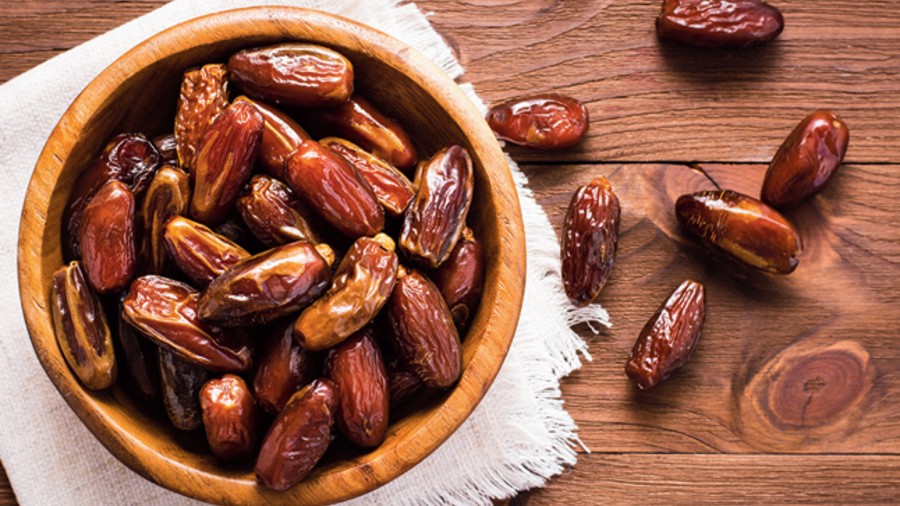During Ramzan you see amber-colour dates everywhere, from the local bazaar to supermarkets. Muslims worldwide break their fast with dates. The date palm is revered by Christians and Jews alike. It is considered a guilt-free natural sweetener and a great source of fibre. Vegans and followers of the paleo diet cherish it for its iron content and as a gluten-free alternative respectively. For some, dates is a matter of faith while for others it’s about health, making it commonplace in most households. Let’s check out if this Ramzan staple is as nutritious as it’s claimed to be.
The origins
Date is a stone fruit, just like mangoes, olives and peaches. They grow on date palm trees and have existed for thousands of years and are believed to have originated in Iraq. The fruit is named “date” after its oval shape, derived from the Greek word daktylos, meaning finger.
The date palm needs a hot climate to grow and hence it is native to the Middle East and North Africa. It’s been a staple in these regions for thousands of years and is referred to as the “tree of life”. Bedouins used to live off dates. A cup full of this fruit every day provides enough calories and nutrients for human survival in dry, barren places. It is now also grown in some parts of California.
Types of dates
All varieties of these oblong fruits are soft, sweet, nutritious and very delicious. They can be eaten fresh or dried. Dates have among the lowest moisture content of any whole fruit — only 30 per cent — meaning they are naturally dehydrated.
Every type of date has its own characteristic — some are soft with a light brown colour and are extremely sweet. Other kinds of fresh dates have a sticky texture and nutty taste with flesh that is amber-to-dark brown. Dried dates are also popular as they contain all of the nutritional goodness as fresh dates but have a longer shelf life. Fresh dates have fewer calories than the dried ones. If you want to gain weight, try to consume dried dates daily. Dried dates form a better source of iron and calcium than fresh ones. And if it’s vitamin C you’re looking for, opt for fresh varieties.
Varieties of dates
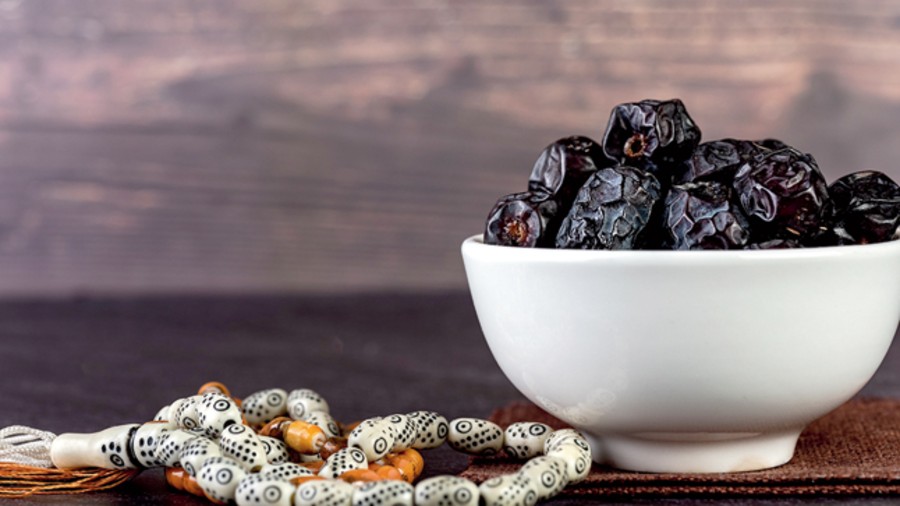
Ajwa Sourced by the correspondent
Ajwa: Muslims celebrate the ajwa date as the ‘holy date’ globally, having its origin in the holy city of Medina in Saudi Arabia. According to Islamic faith, these prune-like dates have healing properties. It tends to be of the dry variety. They are black in colour with fine wrinkled lines. These dates are delightfully soft and mildly sweet. They are lowest in sugar content and calories in comparison with other date varieties. 100g=248 kcal.
Deglet Nour: These semi-dry dates have a soft, delicate honey flavour and a translucent light colour. The name itself means ‘date of light’ because the centre of the date turns amber when held up against the sun. They are also referred to as the ‘queen of all dates’. They are good for cooking and commonly grown in North Africa (Tunisia, Algeria and Libya). 100g=274kcal.
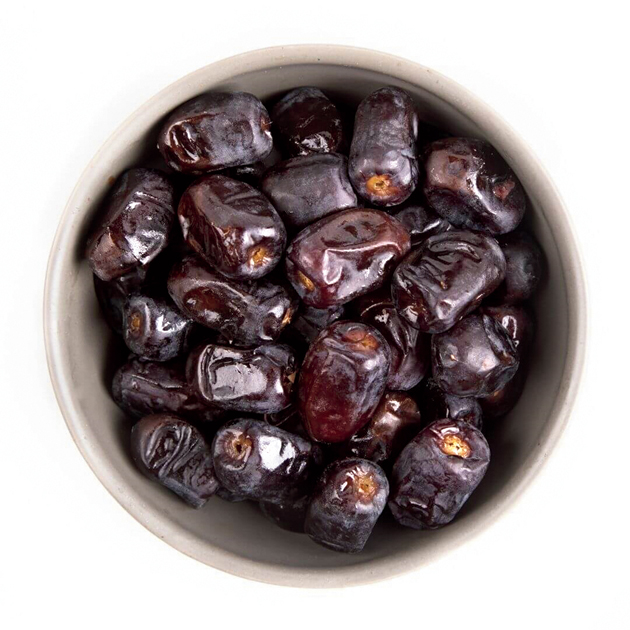
Kimia Sourced by the correspondent
Kimia: Also known as the Mazafati, it is a fresh variety of Iranian origin. Owing to the high moisture content, these dates are scrumptious and juicy. 100g=264 calories.
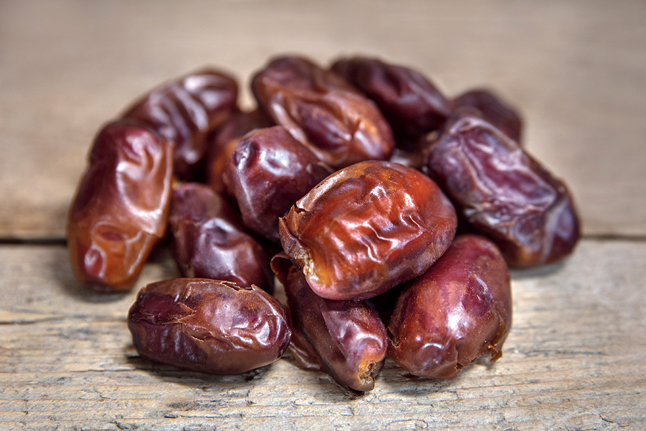
Khidri Sourced by the correspondent
Khidri: These Egyptian dates are the most exported dates in the world as they are reasonably priced. They are large in size, soft and chewy and have a raisin-like flavour. They have a long shelf life and can last up to eight months in airtight containers. 100g=270kcal.
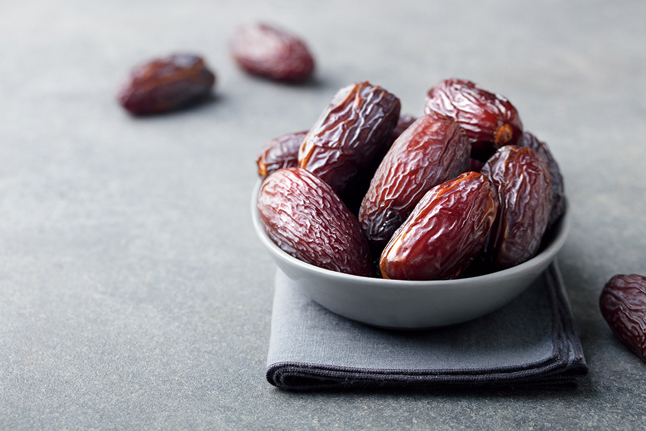
Medjool Sourced by the correspondent
Medjool: Native to Morocco, these dates were originally eaten by royalty, hence known as ‘king of fruits’. They are considered to fend off fatigue and are one of the world’s most popular dates, grown in Jordan, Palestine and Israel. Also known as the California date, they are fresh dates, plump and moist, with a distinctive caramel flavour. 100g=277 calories
Health benefits
Dates are high in natural sugars, so many people disregard them as unhealthy. However, these sweet fruits are highly nutritious, packed with fibre and antioxidants, which raises their health quotient.
Combat fatigue: Dates are high in calories, so 100g of dates, provides approximately 50g of carbohydrates and 225 calories, which make them an energy powerhouse. They help in alleviating exhaustion and weakness. Dried dates are plant-based iron-rich fruit, beneficial to beat fatigue and lethargy caused by anaemia.
Digestive health: The fiber in dates can benefit your digestive health by preventing constipation. It encourages regular bowel movements by providing bulk for better stool formation. Hence, consume dates for better gut health.
Weight management: Just one-fourth of a cup of dates provides more than 10 per cent of a person’s daily fiber requirement. Fiber helps a person feel fuller for longer and can help in calorie control and subsequent weight management. Dried dates are a concentrated source of natural sugar and calories, which is an ideal and healthy food choice to gain weight.
Anti-inflammatory: Compared to similar fruits, such as dried plums and figs, dates appear to have the highest antioxidant content. They contain flavonoids, which may help reduce inflammation, which would potentially reduce the risk of Alzheimer’s disease and certain types of cancers. The carotenoids in them are beneficial for both eye and heart health. Dates contain more polyphenols than most fruits and vegetables. Phenolic acid may help lower the risk of cancer and heart disease and are anti-inflammatory.
Improves heart and muscle health: Dates are high in potassium, an electrolyte the body needs for good heart health. They may also help lower blood pressure, beneficial for hypertensives. Potassium helps regulate muscular contractions, lack of which may lead to weakness and fatigue. Include dates in your diet for stronger muscles.
Message for diabetics
Dates are a great source of fibre. Fiber slows digestion and may help prevent blood sugar levels from spiking too high after eating, thereby reducing its glycaemic index (measure of how quickly your blood sugar rises after eating a certain food). They generally have a low GI, between 44 and 53. A food with a low GI does not cause considerable fluctuations in blood sugar and insulin levels. So, a diabetic can eat dates in moderation, which means not more than one or two at a time. They can add a few nuts with it to further reduce the spike in sugar levels.
Hena Nafis is a consultant nutritionist and the owner of nutrition and lifestyle clinic Nutrience, and the health cafe, Eat Good Food. For more information, visit www.nutriencehenanafis.com / @nutriencebyhenanafis on FB & Instagram

